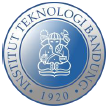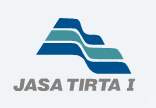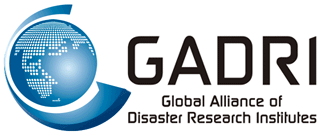- Home
- About
- Events
- Members
- About Members
- Member Institutes
- Algeria
- Argentina
- Australia
- Austria
- Bangladesh
- Brazil
- Bulgaria
- Canada
- China, People's Republic of
- Colombia
- Ecuador
- Egypt
- European Commission
- France
- Germany
- Ghana
- Hong Kong (People's Republic of China)
- India
- Indonesia
- Iran (Islamic Republic of)
- Israel
- Italy
- Japan
- Korea, Republic of
- Lao PDR
- Malaysia
- Mexico
- Morocco
- Nepal
- New Zealand
- Oman
- Phillippines
- Slovakia
- South Africa
- Sri Lanka
- Sudan
- Sweden
- Switzerland
- Chinese Taipei
- Thailand
- Turkey
- United Kingdom
- United States
- Vietnam
- Zimbabwe
- Membership
- Activities
- Resources
- GADRI Archives
 |
Brawijaya UniversityEast Java |
|
Outline This date was later promulgated as UB's anniversary (specifically called Dies Natalies among Indonesian academic society members). Previously, Universitas Brawijaya was publicly known with acronym of UNBRA and then UNIBRAW. On Universitas Brawijaya Senate meeting on March 17, 2008, UB was inaugurated as the official acronym of Universitas Brawijaya. The Hymn of UB was composed by a student of the Faculty of Veterinary and Animal Husbandry called Yanardhana in 1963, while the Mars of UB was composed by Lilik Sugiarto in 1996. Both songs are still frequently sung up to this day. UB campus is situated in the city of Malang, East Java, in a strategic location can easily be reached by public transportations. With trees growing in all corners of the campus and the cool air of Malang, UB indeed is a very fresh campus. As a city of education, Malang has been developing rapidly. This seems to be inseparable from the glory of East Java in the past. [detail] --> |
|
 |
Faculty of Engineering
|
| Outline Gadjah Mada University (UGM) is an Indonesian public research university located in Yogyakarta, Indonesia, founded on December 19, 1949. UGM is the oldest and largest institution of higher learning in Indonesia. Gadjah Mada has been considered to be one of the most prestigious universities in Indonesia, comprises of 18 faculties, 68 undergraduate study programs, 23 diploma study programs, 104 master and specialist study program, and 43 Doctorate study programs. It has approximately 55,000 students, 1,187 foreign students and 2,500 faculty members currently. The vision of UGM is to be an excellent and innovative world Class Research University, imbued with nation's cultural values based on Pancasila as the state ideology and dedicated to the nation's interest and humanity. The Mission is to carry out education, research and community service as well as preservation and development of knowledge that is excellent and useful for society. UGM is creating conducive environment for the continuity of the learning process. These efforts are pursued in the context of developing multidisciplinary collaborations and responding to ecological and environmental issues in order to achieve the vision of the university. Some of the steps are promoting action research in disaster mitigation and implementing socio-preneurial and technical approach for disaster risk reduction. Our wide range of collaboration experiences with similar education institutions, research institutes, government agencies, NGOs and industry has enabled UGM to facilitate intensive collaborations in promoting the disaster risk reduction effort in Indonesia. [detail] --> |
|
 |
Geological Agency (GA), Ministry of Energy and Mineral Resources of the Republic of IndonesiaBandung |
| Outline The Geological Agency (GA) was initially formed during the Dutch colonialism era in the 18th century and was called as Kantoor van het Mijnwezen. In 1850, the name was transformed into Dienst van het Mijnwezen. In 2005, it was finally called as the Geological Agency under the Ministry of Energy and Mineral Resources (MEMR) of the Republic of Indonesia. Based on the decree of MEMR dated 18 November 2010, the Geological Agency (Echelon-I) consists of five Centers (Echelon-II), namely the Secretariat of Geological Agency (SGA), the Center for Geological Resources (CGR), the Center for Volcanology and Geological Hazard Mitigation (CVGHM), the Center for Groundwater Resource and Environmental Geology (CGREG), and the Center for Geological Survey (CGS). The CVGHM was established to conduct research, investigation, engineering recommendations, and services in the field of volcanology and geological hazard mitigation. In performing its duties, the CVGHM performs several functions including (a) the preparation of technical policy development, norms, standards, procedures, and criteria, as well as plans and programs in the field of volcanology and geological disaster mitigation; (b) the implementation of research, investigation, engineering, thematic mapping and analysis of geological disaster risk, as well as early warning of volcanic activity and potential of ground movement and the provision of technical recommendations on geological disaster mitigation; (c) coaching functional of volcano watchers or observers; (d) monitoring, evaluating and reporting the implementation of research, investigation, engineering, thematic mapping and geological disaster risk analysis, as well as early warning of the volcanic activity and the potential ground movement and the provision of technical recommendations geological disaster mitigation; and (e) the administration. The organization structure of the CVGHM consists of four sections, which are: (a) Section of Volcano Monitoring and Investigations (observing 67 active volcanoes by 70 volcano observatories, estimate and publish the states or level of volcanic activity, providing technical recommendations within each states of volcanic activity, publishing disaster-prone area maps, topographic maps , geological map, and providing counseling. [detail] --> |
|
 |
Research Center for Disaster Mitigation, Institut Teknologi Bandung (ITB)Bandung |
| Outline Research Center for Disaster Mitigation, under the coordination of Institute for Research and Community Service - Institute of Technology Bandung, was established since 2003 with the name of Research Group on Disaster Mitigation and then changed into Center for Disaster Mitigation (in 2005) before its current name. The change of name in 2011 brought wider authority and responsibility. The missions of RCDM ITB now are to enhance fundamental and applied research activities, which are able to anticipate, respond to and mitigate the disaster risk; to promote fundamental and applied research results that can strengthen the policy development in disaster management in order to achieve sustainable development; and to support the formation of disaster mitigation expert-communities in Indonesia through education. Research Area: RCDM ITB is a multidiscipline area. Many experts from many expertise, such as seismology, active tectonic, tsunami, infrastructure, geodesy, geology, volcanology, disaster management, regional policy, technology failures, and disaster instrument, which is represented by board of researcher. Besides, the center is also supported by Advisory Board, which consisting of respected head of several institutions related with disaster mitigation. As part of university, the research implemented by RCDMP ITB are focused in three main tasks, i.e. education, research and community services through community-based disaster mitigation activities to increase the awareness of community. [detail] --> |
|
 |
Jasa Tirta I Public Corporation (PJT I)Malang |
| Outline Jasa Tirta Public Corporation was established as a state-owned company with a specified concensus in rendering water services and performing O&M activities based on water service fee abstracted from the users. The corporation was established under the Government Regulation No. 5 of 1990. To adapt further to the responsibilites and assignments, the regulating basis of Jasa Tirta I Public Corporation (PJT I) was twice ammended. Firstly, in 1999, by the Government Regulation No. 93 of 1999, in order to strengthen the organization and permit its jurisdiction to extend to other basins; and recently by the Government Regulation No. 46 of 2010. The objective and goal of PJT I is take part and support the Government policy and program on economic sector and national development in general, and particularly on business of water resources and its management, as well as optimization of PJT I's resources to produce goods and services based on healthy corporation management principles. In order to achieve the objective and goal, PJT I conducts main business activities: (1) services to provide bulk water for drinking water, industry, agriculture, flushing, port, electric power generation and others; (2) provide water power to generate electricity for the State Electricity Company; (3) generate and distribute electric power and drinking water, perform consulting in water resources fields, heavy equipment rental and water quality laboratory services, and (4) develop other water-related services including piped domestic supply at specified scales. PJT I in-charged in managing the water resources in 40 rivers (including the Brantas River) of the Brantas River Basin and to operate, maintaining, and managing the major infrastructure in these rivers. In 2000, the corporation was authorized to undertake water resources management activities within 25 rivers of the Bengawan Solo River Basin (an inter-provincial river basin lying in Central and East Java Provinces). In 2014 the corporation was authorized to undertake water resources management activities including controlling of water destructive forces, in Serayu Bogowonto and Jratunseluna River Basins in Central Java and Toba Asahan River Basin in North Sumatera. [detail] --> |
|


